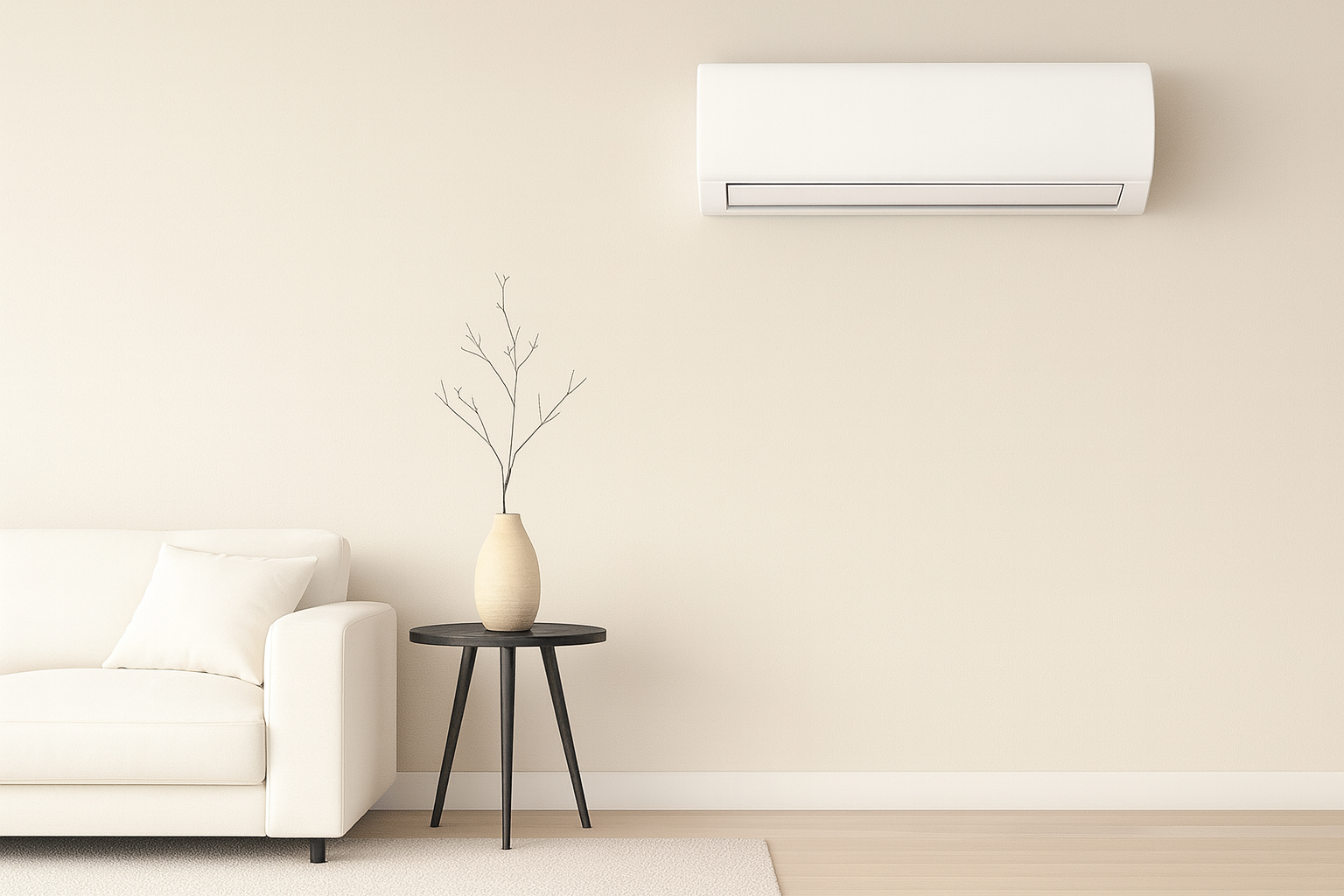Introduction: Summer is coming—get your aircon ready now
Sydney’s warm, often humid summer (December–February) sees daytime temperatures commonly in the high teens to mid‑20s—with Western Sydney heat spikes during heatwaves. That’s when searches for “air conditioning Sydney” and “aircon installation Sydney” surge—and when small tweaks to setup, maintenance and usage can slash bills. This guide explains how to prepare your aircon for summer in Sydney, the best temperature settings, real running‑cost drivers, and why professional aircon installation is essential for safety, compliance and long‑term savings.
What’s the Ideal Temperature Setting for Your Aircon in Sydney’s Summer?
For most Sydney homes, the sweet spot is 24–26 °C. That keeps you comfortable while keeping the compressor load down. Every 1 °C below ~24 °C can raise energy use by about 5–10%—so a small nudge up pays off fast. Pair that with ceiling fans (to improve perceived cooling), close blinds on west‑facing windows, and run the unit earlier on very hot days to pre‑cool.
- Start at 24 °C, adjust by ±1 °C for comfort.
- Use fan mode or ceiling fans to feel 2–3 °C cooler at the same setpoint.
- Pre‑cool before the hottest hour; avoid big overnight setbacks.
How Much Does Running Air Conditioning Actually Cost in Sydney?
There’s no single figure—costs depend on room size, set temperature, hours used, and system efficiency. Two levers dominate your bill:
- Setpoint choice: Raising the thermostat from 22 °C to 24 °C can trim ~10–20% off cooling energy for many households.
- Run‑time and timing: Long afternoon runs and all‑night cooling inflate costs; pre‑cooling and fan assist reduce compressor time.
Rule of thumb: If a family typically spends $1,000–$1,500 on summer electricity with heavy AC use, choosing 24 °C instead of 22 °C can often save $100–$300+ over the season (illustrative based on the 5–10%‑per‑degree principle and typical usage hours).
Prepare Your Aircon for Summer: A Sydney Checklist
- Clean or replace filters (monthly in peak use). Dirty filters throttle airflow and force longer run‑times.
- Clear the outdoor unit. Remove leaves/dust; ensure 300–600 mm free airflow around the condenser.
- Seal the envelope. Close gaps; draw curtains/blinds on hot afternoons—especially in Western Sydney.
- Optimise modes. Use dry/dehumidify on muggy days; eco or fan to maintain comfort at higher setpoints.
- Book a pre‑summer service. A professional checks refrigerant, electrical connections, drains and coils.
Why Professional Installation Saves You Money Long‑Term
Incorrect sizing, poor line‑set work, or inadequate circuit protection locks in higher energy use and future faults. Research shows installation faults materially increase energy consumption; a mischarged system or non‑condensable gases can increase use by ~4–16% and erode rated efficiency.
- Right‑sized capacity for your room, reducing short‑cycling.
- Correct refrigerant charge/evacuation prevents efficiency drift.
- Proper electrical protection (dedicated circuit, RCD/RCBO).
- Placement that maximises airflow & serviceability.
Legal & Safety: Do I Need a Licensed Electrician (and ARCtick) in NSW?
Yes. In NSW, electrical wiring work must be carried out by a licensed electrician, and AC/refrigeration requires the appropriate licence/certificate. After the work, your electrician provides a CCEW. Handling refrigerant requires ARCtick licensing under the national scheme. These safeguards protect your warranty, safety and insurance.
How to Save Money on Air Conditioning Costs (Actionable Playbook)
- Lock in 24–26 °C. Each degree cooler can add ~5–10% to consumption.
- Use ceiling fans (and dry mode) to boost comfort.
- Shade and seal—especially in Western Sydney suburbs.
- Pre‑cool smartly ahead of heatwaves.
- Maintain filters and coils.
- Right‑size and modernise with inverter split systems.
Sydney‑Specific Notes
- Climate baseline: many days ~18–26 °C; humid periods; Western Sydney spikes.
- Planning & noise: Some installs are Exempt Development; check NSW Planning and council rules.
The Case for Split System Installation in Sydney
Modern inverter split systems suit Sydney’s coastal climate, delivering high COPs and lower running costs when installed and set correctly. Federal resources explain how reverse‑cycle systems multiply delivered heating/cooling relative to input power—so proper selection and commissioning matter.
Example: How Setting 24 °C Can Save You This Summer
If your lounge runs 6 hours/day over 60 summer days at 22 °C using ~1.2 kW on average, that’s ~432 kWh. Bumping to 24 °C (saving ~10% per degree × 2 degrees ≈ 20%) cuts that to ~346 kWh—~86 kWh saved. At a typical NSW tariff, that’s roughly $50–$100+ saved before fan assist/shading.
Professional Installation: What You Get with Prime Time Electrical
- Compliance with AS/NZS 3000:2018 and manufacturer specs
- ARCtick‑compliant refrigerant handling/commissioning
- Load calculations and correct circuit design
- CCEW and warranty activation
- Local knowledge of Sydney councils’ siting/noise expectations
FAQ
What temperature should I set my air conditioner to in summer?
Start at 24 °C; each degree cooler adds ~5–10% to energy use. Use fans and shade to stay comfy at 24–26 °C.
How much does it cost to run air conditioning in Sydney?
It varies by setpoint, room size, hours and efficiency. Raising from 22 °C to 24 °C can save ~10–20% over the season.
Do I need a professional to install my air conditioner?
Yes—licensed electrician for wiring and ARCtick for refrigerant. It protects safety, warranty and insurance.
How can I save money on aircon costs?
Keep 24–26 °C, clean filters, add shade, run ceiling fans, pre‑cool on hot days, and book pro maintenance.
General information only. Always consult a licensed electrician/HVAC technician for your specific site. External resources are provided for further guidance.
